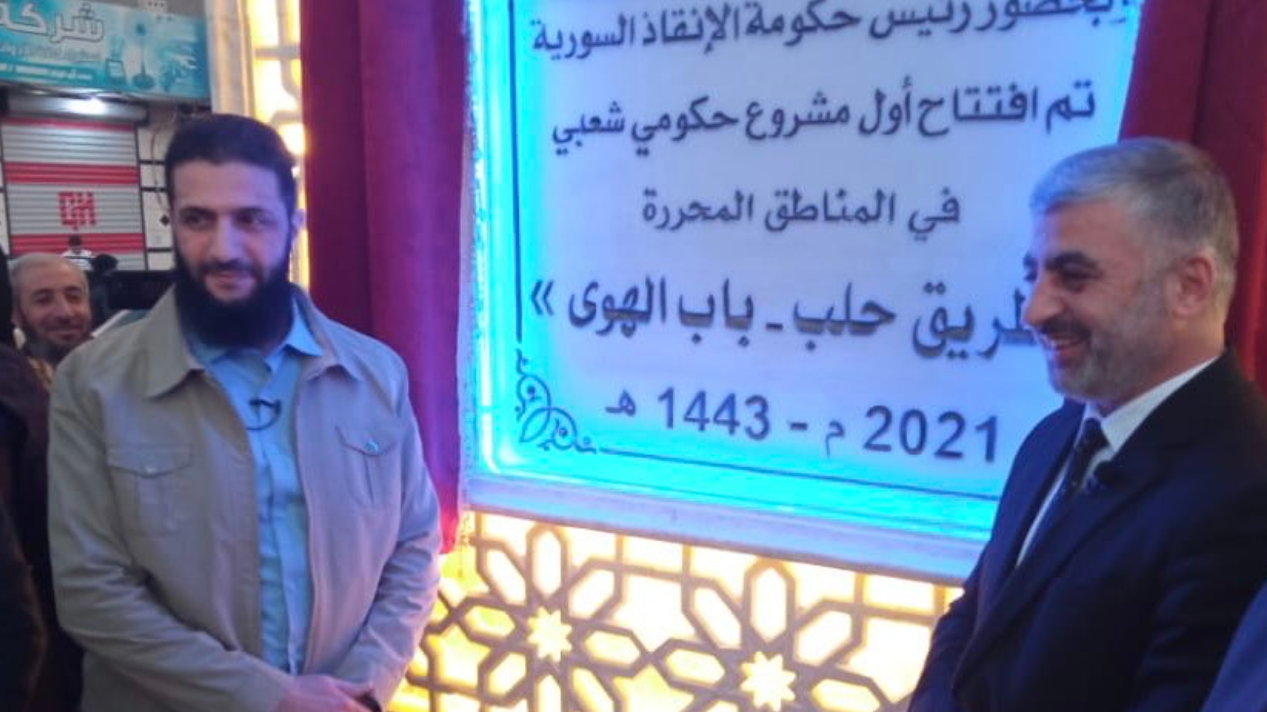Tahrir al-Sham leader, Abu Mohammed al-Joulani, said that his group plans to turn the areas under its control into a “large investment environment” by developing a strategic plan in construction and economic development.
On Saturday, Joulani made these comments during a speech when he took part in the opening of the Bab al-Hawa-Aleppo road alongside Ali Keda, the head of the Syrian Salvation Government.
“Tahrir al-Sham has been pursuing a strategic plan for more than three years in construction and progress, economic development in many respects. What you see today from this process is a first and principled step — not the largest, but a medium-sized step — compared with what you will see in the future,” Joulani said.
Joulani claimed that his plan aimed to “preserve human resources and reinforce educational institutions,” adding: “from the strategic plan, we have built paved roads and hospitals, while also constructing universities and infrastructure for communications and electricity.”
“All you see now is the beginning. What comes next will be much bigger, and I am confident that Tahrir al-Sham will provide a very large economic and investment environment,” he said.
Read Also: Idleb: Shura Votes Confidence to 9 Ministers in Salvation Government
“What you see today is the beginning of an economic renaissance in the region. We must focus on production because, through production, the economy is growing with the help of HTS,” he said.
The HTS controls the entire city and countryside of Idleb, along with the western Aleppo countryside. The Syrian Salvation Government is the civilian arm of Tahrir al-Sham in the region.
Tahrir al-Sham has a large and complex economic network, with border crossings being one of the authority’s largest resources, particularly the Bab al-Hawa crossing. This is the most prominent gateway to Tahrir al-Sham’s financial resources, especially since it took control of the crossing after a 2017 military operation launched against the Ahrar al-Sham Islamic Movement.
Tahrir al-Sham also controls trade and a monopoly over the import of oil goods and derivatives from basic resources.
In a September 2019 video, former Tahrir al-Sham leader Abu al-Abd Ashdaa said that Tahrir al-Sham had invested $130 million, “so that the ship does not sink.”
It is not the first time that Joulani has spoken of economic development in areas under Tahrir al-Sham’s influence. Indeed, he has intensified his public appearances in recent months, reiterating that he has reached the stage of institution-building.
“The current phase is the stage of preparing and building institutions,” Joulani said during a meeting with tribal elders in Idleb, held in May last year. “We are ready for a big war, but at the same time, we are building institutions. And every institution that we build in liberated areas marks another step towards Damascus.”
Idleb’s “electricity dilemma”: price hike and popular discontent
Joulani’s promises come despite the deteriorating economic situation in areas under his influence, with Idleb witnessing popular demonstrations against the Syrian Salvation Government last October due to high living expenses.
The demonstrators carried banners criticizing the high prices of items that they needed on a daily basis, particularly fuel and food products.
This article was translated and edited by The Syrian Observer. The Syrian Observer has not verified the content of this story. Responsibility for the information and views set out in this article lies entirely with the author.


